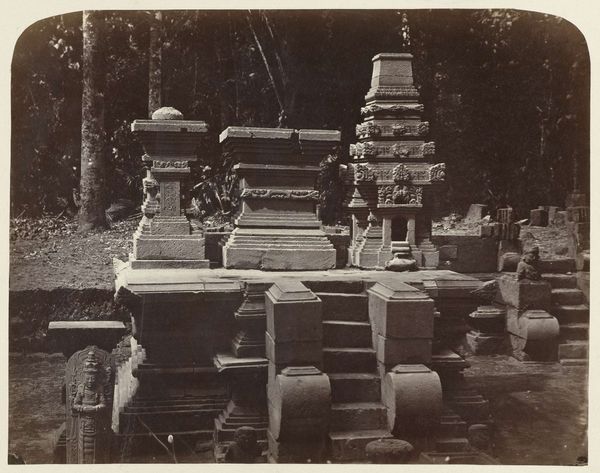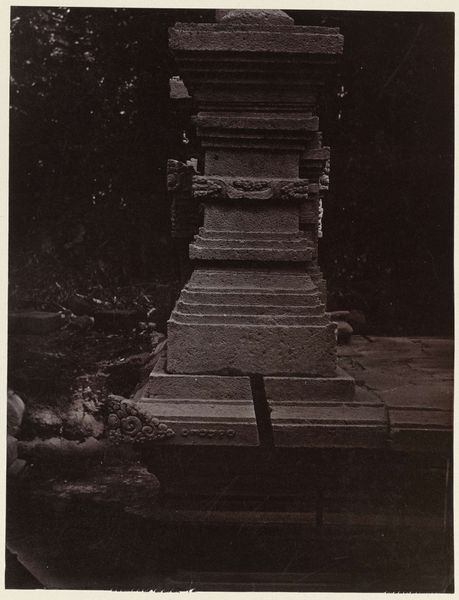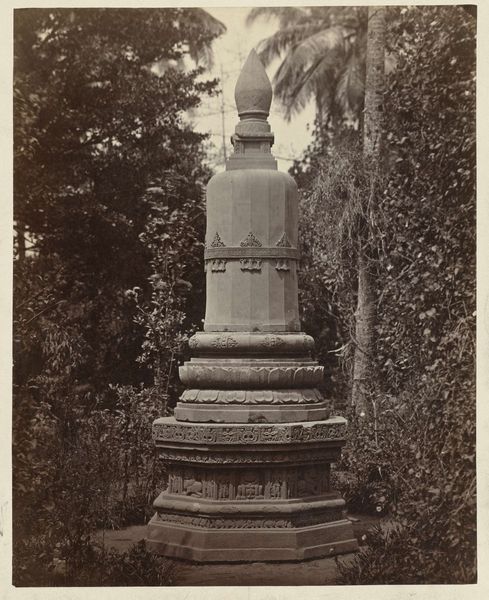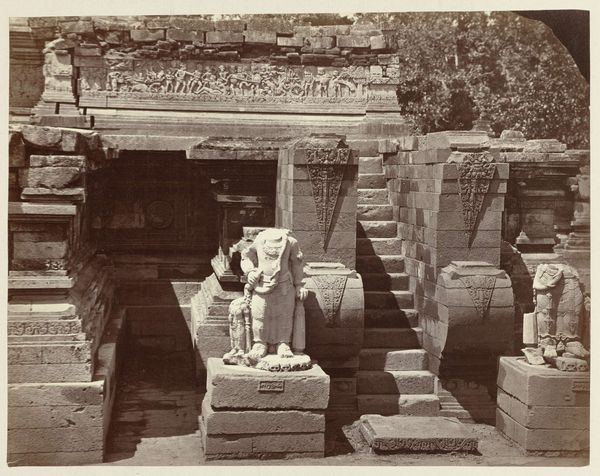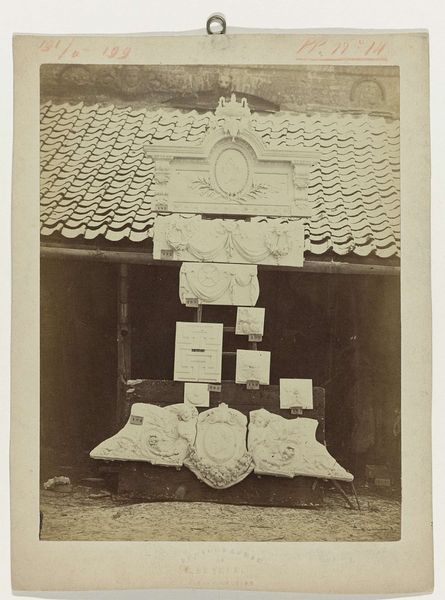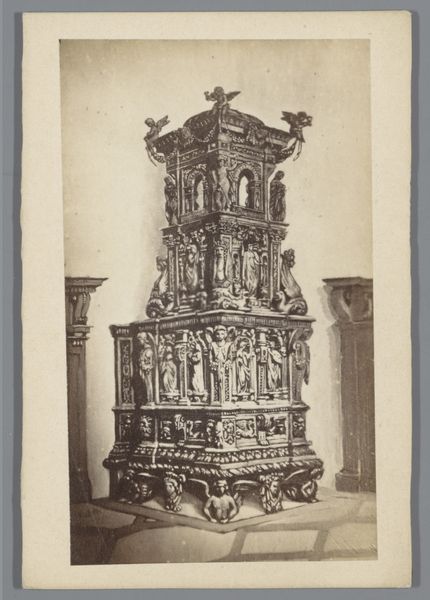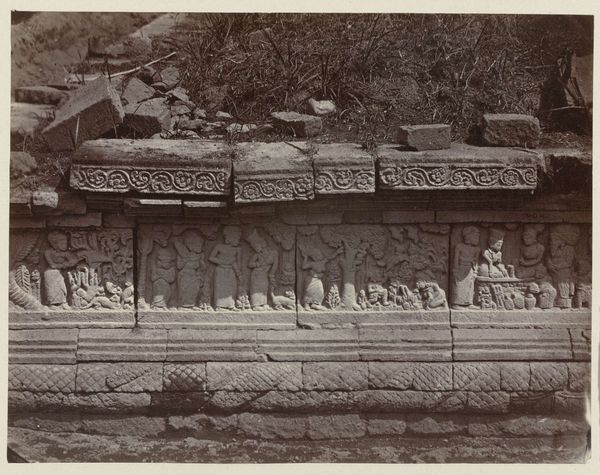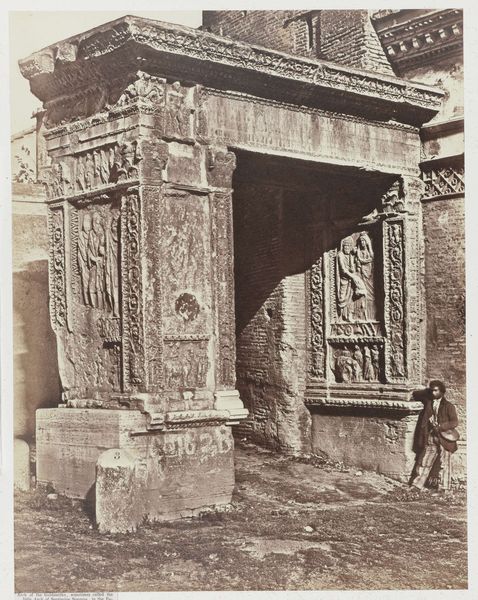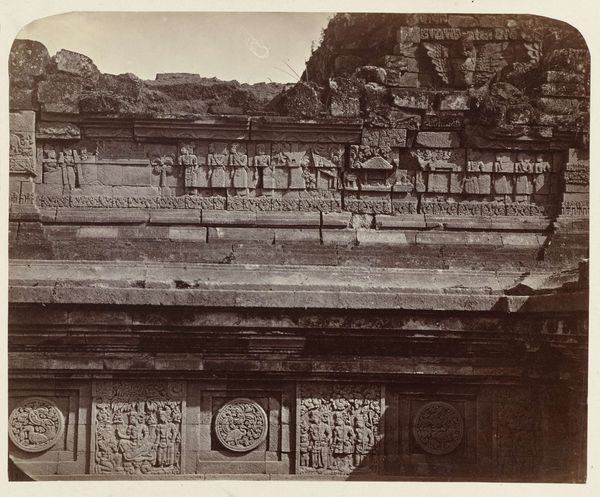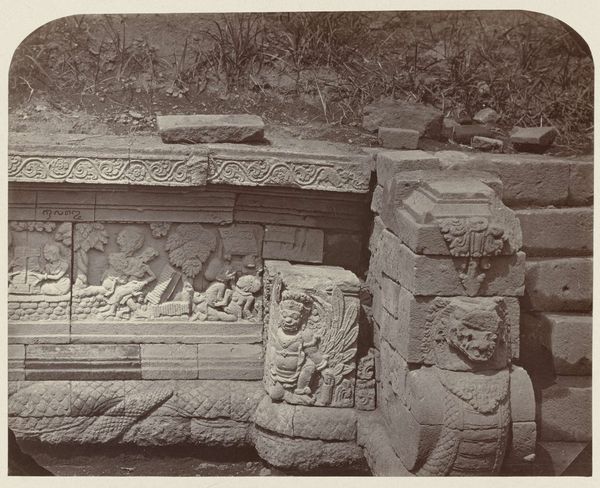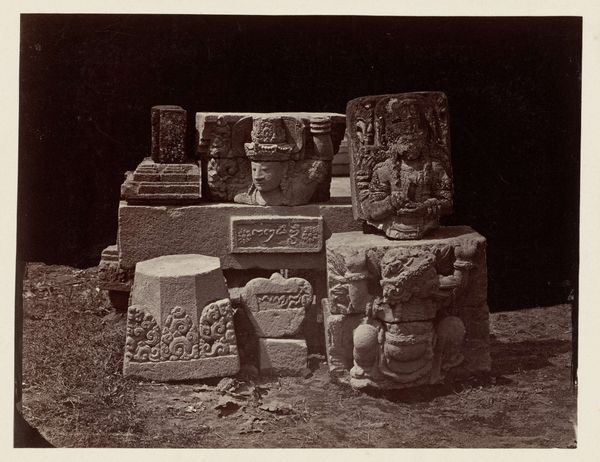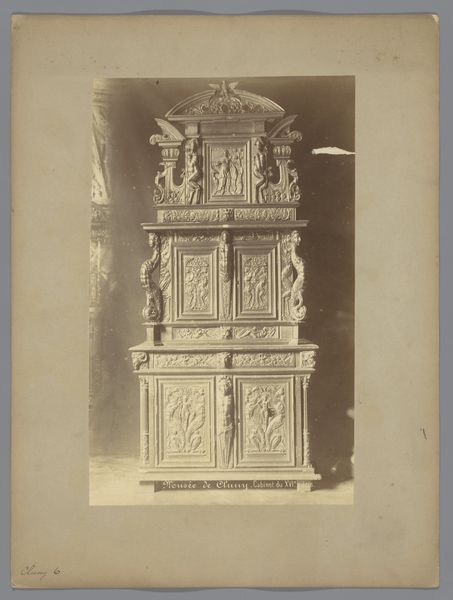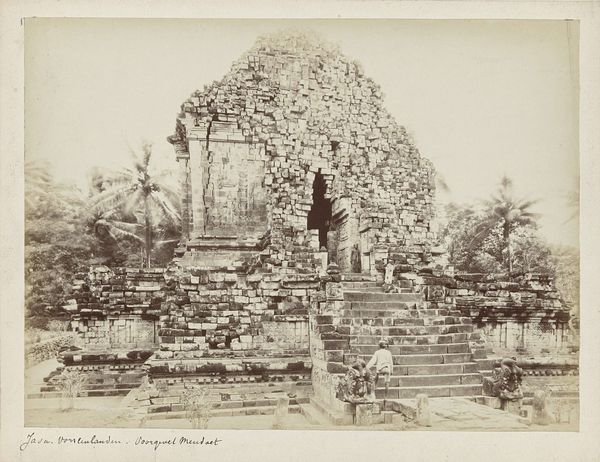
Candi Papoh/Kotes, platform miniature temple with kalamukha ornaments, rear view. Gandusari, Blitar district, East Java province, 13th-14th century 1867
0:00
0:00
carving, tempera, bronze, photography, sculpture, site-specific, installation-art
#
carving
#
tempera
#
asian-art
#
bronze
#
photography
#
sculpture
#
site-specific
#
installation-art
#
islamic-art
Dimensions: height 340 mm, width 290 mm
Copyright: Rijks Museum: Open Domain
Curator: What a striking image! We’re looking at a photograph from 1867 by Isidore Kinsbergen, capturing the Candi Papoh, also known as Kotes. It’s a miniature platform temple from Gandusari, Blitar, in East Java, likely dating back to the 13th or 14th century. Editor: The image certainly holds a power that transcends its subject matter. I am struck immediately by the dense materiality captured here – you can almost feel the weight and the granular texture of the stone. What can you tell us about the way it was constructed? Curator: The temple's architecture, though miniature, echoes grander Javanese structures, doesn't it? You see the distinct tiered platform design, adorned with kalamakara ornaments - those fierce, protective faces. They're placed strategically, warding off negative energies. The visual language of protection is fascinating. Editor: Fascinating indeed, and I'm particularly interested in the labor invested here. Think about the quarrying of the stone, the carving of the intricate details—all without modern tools. This photograph documents not just an object, but the confluence of labor, belief, and available resources of the time. Curator: Precisely. And the choice of iconography reinforces the intent. The kalamakara isn’t just decorative; it’s a powerful symbol meant to instill a sense of reverence and, frankly, awe. Consider how such images historically shaped belief and social conduct. It shows how central symbols like this were and are in establishing and perpetuating order. Editor: I wonder also about its original context within its local landscape. What purpose did it really serve to the population living there? To the labourers carving the images into the very stone it was constructed of? The consumption and purpose is almost totally lost in time. Curator: That sense of lost context heightens its mysterious appeal, don't you think? Perhaps it served as a focus for personal meditation, a microcosm of the cosmos, its symbolism designed to elevate the spirit and mind of those who meditated upon it? Editor: It also underscores photography's role in preserving the visual memory of cultures and specific moments of time. Looking at the granularity in the image, one wonders how different this looks than in reality, and one wishes they could truly go back to the moment and learn everything they could about it from scratch! Curator: Agreed. Kinsbergen’s photograph offers us more than just an image; it’s a portal. A view onto devotion and craft through time. Editor: Absolutely, it is testament to the material processes through which spiritual intentions become realised, even at miniature scales and viewed through the distance of a camera lens.
Comments
No comments
Be the first to comment and join the conversation on the ultimate creative platform.
